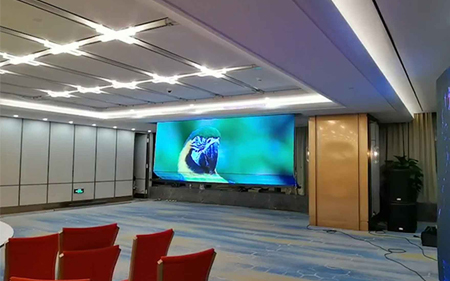As we all know, indoor LED display screens are used in indoor environments and are very suitable for displaying high-definition images and videos. Therefore, we can see indoor LED display screens in indoor activity places such as stores, exhibition halls, schools, hospitals, company meeting rooms, control rooms, studios, command centers, and stadiums. Do you know what aspects to pay attention to when using indoor LED display screens? Below, ONUMEN will introduce them to you:

When using indoor LED display screens, pay attention to the following aspects:
The shooting distance of the captured image is related to the pixel pitch and fill factor of indoor LED display screens with different pixel pitches and fill factors. For example, for indoor LED display screens with a pixel pitch of 4.25mm and a fill factor of 60%, the appropriate distance between the subject and the screen is 4 to 10 meters. This way, when capturing the subject, a better background image can be obtained. If the subject is too close to the screen, there will be graininess in the background when shooting close-up, and it is also prone to moiré interference.
Pixel pitch refers to the distance between the center points of adjacent pixels on indoor LED display screens. The smaller the pixel pitch, the higher the pixel density and resolution per unit area, and the closer the shooting distance can be. Of course, the price will also be higher. For example, the pixel pitches of indoor LED display screens used in domestic television studios are mostly around 1.5 to 2.5mm. It is necessary to carefully study the relationship between the resolution of the signal source and the pixel pitch, and strive to achieve consistent resolution for point-to-point display, thereby achieving a good display effect.
When using an indoor LED display screen as a background in the studio, its color temperature should match the color temperature of the studio's interior lighting to accurately reproduce colors during shooting. Depending on the program's requirements, the studio lighting may sometimes use 3200K low-color-temperature fixtures and at other times, 5600K high-color-temperature fixtures. The indoor LED display screen needs to be adjusted to the corresponding color temperature to achieve satisfactory shooting results.
Ensure a good operating environment:
The lifespan and stability of indoor LED display screens are closely related to the operating temperature. If the actual operating temperature exceeds the specified usage range, it can shorten the screen's lifespan and lead to severe damage. Additionally, the threat of dust should not be underestimated. Excessive dust can reduce the screen's thermal stability, lead to electrical leakage, and in severe cases, result in damage. Dust can also absorb moisture, causing corrosion in electronic circuits, leading to hard-to-detect short-circuit problems. Therefore, it's important to maintain cleanliness in the studio.
In summary, these are some aspects to consider when using an indoor LED display screen. By paying attention to these factors, you can not only maintain the reliable operation of the indoor LED display screen but also extend its lifespan.